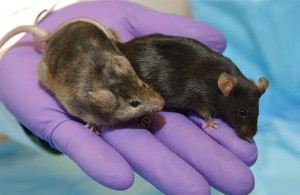
Animal studies of drug efficacy are an important resource for designing and performing clinical trials. They provide evidence of a drug’s potential clinical utility, inform the design of trials, and establish the ethical basis for testing drugs in human. Several recent studies suggest that many preclinical investigations are withheld from publication. Such nonreporting likely reflects that private drug developers have little incentive to publish preclinical studies. However, it potentially deprives stakeholders of complete evidence for making risk/benefit judgments and frustrates the search for explanations when drugs fail to recapitulate the promise shown in animals.
In a future issue of The British Journal of Pharmacology, my co-authors and I investigate how much preclinical evidence is actually available in the published literature, and when it makes an appearance, if at all.
Although we identified a large number of preclinical studies, the vast majority was reported only after publication of the first trial. In fact, for 17% of the drugs in our sample, no efficacy studies were published before the first trial report. And when a similar analysis was performed looking at preclinical studies and clinical trials matched by disease area, the numbers were more dismal. For more than a third of indications tested in trials, we were unable to identify any published efficacy studies in models of the same indication.
There are two possible explanations for this observation, both of which have troubling implications. Research teams might not be performing efficacy studies until after trials are initiated and/or published. Though this would seem surprising and inconsistent with ethics policies, FDA regulations do not emphasize the review of animal efficacy data when approving the conduct of phase 1 trials. Another explanation is that drug developers precede trials with animal studies, but withhold them or publish them only after trials are complete. This interpretation also raises concerns, as delay of publication circumvents mechanisms—like peer review and replication—that promote systematic and valid risk/benefit assessment for trials.
The take home message is this: animal efficacy studies supporting specific trials are often published long after the trial itself is published, if at all. This represents a threat to human protections, animal ethics, and scientific integrity. We suggest that animal care committees, ethics review boards, and biomedical journals should take measures to correct these practices, such as requiring the prospective registration of preclinical studies or by creating publication incentives that are meaningful for private drug developers.
BibTeX
@Manual{stream2014-542,
title = {The Literature Isn’t Just Biased, It’s Also Late to the Party},
journal = {STREAM research},
author = {Carole Federico},
address = {Montreal, Canada},
date = 2014,
month = jun,
day = 30,
url = {http://www.translationalethics.com/2014/06/30/the-literature-isnt-just-biased-its-also-late-to-the-party/}
}
MLA
Carole Federico. "The Literature Isn’t Just Biased, It’s Also Late to the Party" Web blog post. STREAM research. 30 Jun 2014. Web. 22 Oct 2024. <http://www.translationalethics.com/2014/06/30/the-literature-isnt-just-biased-its-also-late-to-the-party/>
APA
Carole Federico. (2014, Jun 30). The Literature Isn’t Just Biased, It’s Also Late to the Party [Web log post]. Retrieved from http://www.translationalethics.com/2014/06/30/the-literature-isnt-just-biased-its-also-late-to-the-party/






